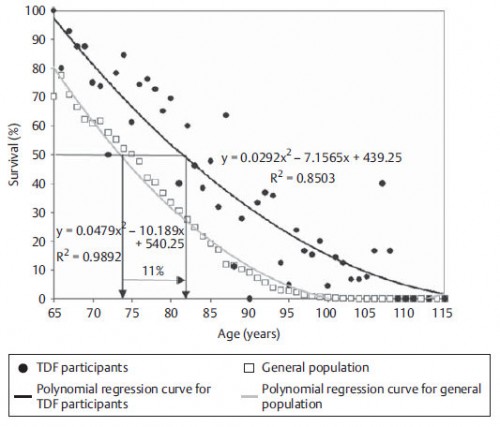Ed Whitlock's still going at 80
Ed Whitlock holds 13 world records in the specialized field of seniors long-distance running.
‘I’m happy to be lazy,” says Ed Whitlock, the 80-year-old Canadian man who holds most of the world’s records in the specialized field of seniors long-distance running. Whitlock, who ran a marathon in under three hours at 73 years old, lost some time to knee arthritis in 2008, and was told that he’d never run again. He took it in stride.
“I don’t find all this training particularly enjoyable, it’s kind of a drudge,” says Whitlock, a resident of Milton, Ont., who’s lived with his wife Brenda for 52 years. “I saw a joint specialist and her verdict was that my running days were over, but you don’t necessarily have to take the expert’s verdict. I’ve basically done nothing at all to treat it, just take a rest.”
Ed Whitlock’s rest is over and the holder of 13 world records will be running the Scotiabank Waterfront Marathon in Toronto this October. Whitlock, who doesn’t stretch or do yoga, generally runs solo and cuts the heels off his running shoes, pays no mind to his diet and aims to run every day for three hours to train.
“I don’t measure my pace or anything like that. I just try and run conservatively and not pound my knees,” says Whitlock, who heads out to California next week to compete at the World Masters, a track and field event that will also feature Saskatchewan’s Olga Kotelka, 92, competing in 13 events, including the pole vault and high jump. “I don’t think I’m a terribly inspirational person. I’m sure this is all some kind of ego trip in a way.”
However, for kinesiology experts, Olympic athletes and Canadian coaches, the former mining engineer has become a hero, and not just for his times. Scotiabank’s race director Alan Brookes recalls being with Whitlock at a race in Rotterdam and marvelling at his stature in the running world.
“Guys were just blown away by him,” says Brookes, who recalls that many of the younger Kenyan athletes wanted to meet this elite runner old enough to be their great grandfather, yet could still run a three-hour marathon. “If you’re 25 and training your eyeballs out, three hours is something phenomenal. Then there’s Ed, this self-effacing, dapper octogenarian floating by you with a smile. It adds up to a special mystique.”
That mystique has only grown through the years as Whitlock battled back from injury and is now attempting to run another marathon in the fall. Last September, Whitlock competed in the half-marathon and set a world record for the fastest time ever by a 79-year-old, 1 hour and 34 minutes. Today, still running without a coach and free of any commercial endorsements — and sitting with Brenda, enjoying the odd glass of wine — Whitlock says he can envision himself running marathons for another 10 years.
“When I’m racing it doesn’t really feel any different, when I look at the clock it’s a big difference, but when I’m running it basically feels the same way it did in my teens,” he says. “It’s more difficult to get going, I creak out of the house, but once I get the bones moving, I still have a fair amount of speed.”
Ed Whitlocks's five rules for marathon running
Ed Whitlock is 80-years-old and holds 13 world records in long-distance running. As he prepares to run the Scotiabank Toronto Waterfront Marathon, we asked him for his best five tips on how to replicate his extraordinary running career.
5. Personalize your training: “Everyone has to find what kind of training works best for them. For me, three hours of running every day works best. But you need to find out what works best for you.”
4. Take each run in stride: “I used to run on the outskirts of Milton and I’d get into these competitions with myself: ‘God, I’m slow today.’ Now, runing these small loops in the cemetary, I don’t count them or time them. I try not to get in those competitions with myself.”
3. Run alone: “It’s more enjoyable running in a group, but then you have to run at someone else’s pace and not your own. Sometimes my youngest son joins me, but I don’t particularly welcome him. He’s generally a couple of paces in front of me, saying, ‘Why are you running so slow?’ I prefer not to run in a group.’
2. Don’t over-think stuff: “I don’t do any real stretching and eat far more fats than would be recommended, including terrible stuff like trans fats and butter. I’m not feasting on Big Macs and chips, but I do eat fish and chips on occasion, and Brenda and I probably drink a fair amount of wine. I try and avoid any stress.”
1. Enjoy your finish lines: “I don’t actively dislike running, but I don’t suffer from runner’s high or any of that kind of stuff. Training’s something to be endured rather than be enjoyed, but I’m always very happy when it’s over.”
be inspired
johnny boy
**credit to the Nat'l Post
be inspired
johnny boy
**credit to the Nat'l Post








